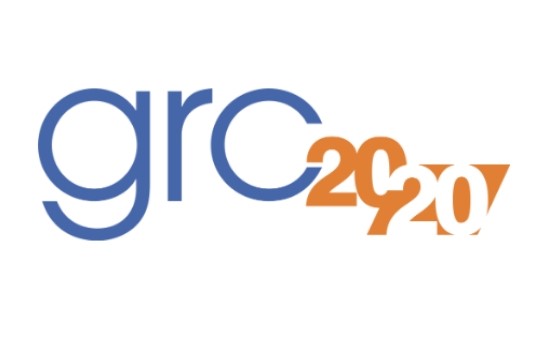 In the complex and dynamic world of modern business, the simplicity of past operational practices has been replaced by a landscape where understanding and managing interconnected objectives, risks, and resilience is critical. Organizations must cultivate a comprehensive, 360° awareness of risk, and resilience, recognizing the intricate interplay between objectives, risks, processes, and controls. Traditional, siloed approaches fall short, leading to fragmented insights and an inability to see the broader enterprise picture, impacting strategies and objectives.
In the complex and dynamic world of modern business, the simplicity of past operational practices has been replaced by a landscape where understanding and managing interconnected objectives, risks, and resilience is critical. Organizations must cultivate a comprehensive, 360° awareness of risk, and resilience, recognizing the intricate interplay between objectives, risks, processes, and controls. Traditional, siloed approaches fall short, leading to fragmented insights and an inability to see the broader enterprise picture, impacting strategies and objectives.
Risk and resilience management cannot be a mere compliance exercise, detached from the organization’s core strategy and decision-making. This misalignment can result in significant failures, making organizations vulnerable to risks and, ultimately, undermining their resilience. The business environment, characterized by its chaotic nature, means that even minor events can escalate rapidly, having far-reaching effects. Therefore, organizations need to implement an enterprise-wide view of risk and resilience, encompassing complete situational awareness and agility in their approach to risk management.
In this context, risk agility is crucial – not just in avoiding threats but also in seizing opportunities. It’s about the ability of an organization to think and act quickly, understanding and adapting to its environment efficiently. This type of agility should be integrated into risk and resilience management, enabling organizations to both exploit opportunities and avoid potential threats. Organizations need a symbiotic relationship between operational risk, resilience, and agility to navigate today’s complex, distributed, and disrupted business landscape.
In today’s fast-paced and dynamic business world, the concepts of risk and resilience have never been more relevant. Let’s delve into the latest risk and resilience management trends and best practices, offering insights and strategies to help organizations adapt and thrive amid uncertainty and chaos.
- Harmonizing Risk and Resilience – Integrating risk management with resilience practices is essential for a unified approach to organizational challenges. Organizations must blend traditional risk management techniques with resilience-focused strategies to create a robust framework that can withstand and adapt to unexpected changes and disruptions.
- Risk Agility for Enhanced Resilience – Being agile is more than just being resilient, as risk agility enables an organization to see what is coming at it and avoid risk events or even leverage them. Using scenarios and risk planning, organizations can foster risk agility to enhance their resilience. This includes implementing strategies for anticipating potential threats, responding swiftly to emerging risks, and adapting risk management processes.
- Analytical and Creative Risk and Resilience Strategies – A balanced approach, leveraging both analytical and creative risk and resilience strategies and scenarios, is key to effective risk and resilience management. Organizations must use left-brain (analytical) and right-brain (creative) thinking to develop comprehensive risk and resilience strategies covering all bases.
- Risk and Resilience in the Extended Enterprise – Today’s organizations are part of a broader ecosystem that includes suppliers, partners, vendors, and service providers. An organization cannot be agile and resilient without including the extended enterprise of third-party relationships that provide critical services and products to the organization. Organizations need to focus on managing risks and fostering resilience throughout their supply chain and in partnerships.
- Navigating Compliance with Resilience Regulations – The modern business environment is increasingly regulated, with new frameworks emerging to guide organizational resilience. Understanding these regulations is crucial for compliance and for shaping industry resilience strategies. Global organizations must harmonize risk and resilience requirements into a cohesive program that not only meets regulatory requirements but also delivers value to the business.
- The Role of Technology in Managing Risk and Resilience – Technological advancements are revolutionizing integrated risk and resilience management. Organizations need to adopt the latest tools and technologies to improve risk and resilience planning, response, and recovery.
- AI’s Impact on Resilience Management – Part of the role of technology is understanding that artificial intelligence (AI) is a game-changer in the field of risk and resilience management. AI enhances predictive capabilities, improves decision-making, and strengthens operational resilience. There are current real-world applications and potential future developments in AI-driven risk and resilience management.
In order to keep pace with these emerging trends, organizations must adopt a forward-thinking approach to integrated risk and resilience management. A comprehensive risk and resilience management program goes beyond the organization’s boundaries, addressing risks and resilience in the extended enterprise, including third-party relationships. Such a program isn’t just about risk mitigation; it’s about creating value and driving business optimization.
This holistic view ensures that risks are identified and managed within the organization and across its entire network, which is vital in our interconnected business world. This integrated approach makes risk and resilience action-oriented, providing operational intelligence that can significantly enhance decision-making processes.
The foundation of this strategy lies in robust risk management and business continuity principles. However, it evolves further to understand how the business operates and how it can break when faced with disruptions. This deep understanding enables organizations to be agile, responding quickly and effectively to both opportunities and threats. Agility here is key – it’s about moving beyond traditional risk avoidance to a state where organizations can swiftly adapt to changes, seize opportunities, and maintain operational continuity despite unforeseen challenges.
In essence, an effective risk and resilience management strategy aims to achieve risk agility and resilience that contributes to the overall optimization of the business. This means thriving, not just surviving, in a challenging environment, using risk and resilience as levers for strategic advantage and sustained success. Adopting this approach, organizations can transform their risk management practices from a compliance obligation to a valuable tool for achieving business excellence and resilience. Managing risk and resilience in today’s ever-changing business landscape requires a multifaceted approach.
By embracing these best practices and key trends and integrating them into their strategies, organizations can navigate uncertainty and chaos, turning potential threats into opportunities for growth and innovation. We will go into detail with these best practices and trends in the upcoming webinar, Navigating Uncertainty and Chaos: Best Practices in Risk and Resilience Management, taking place on Wednesday, May 1 at 9:00 am CT. Reserve your spot today.






